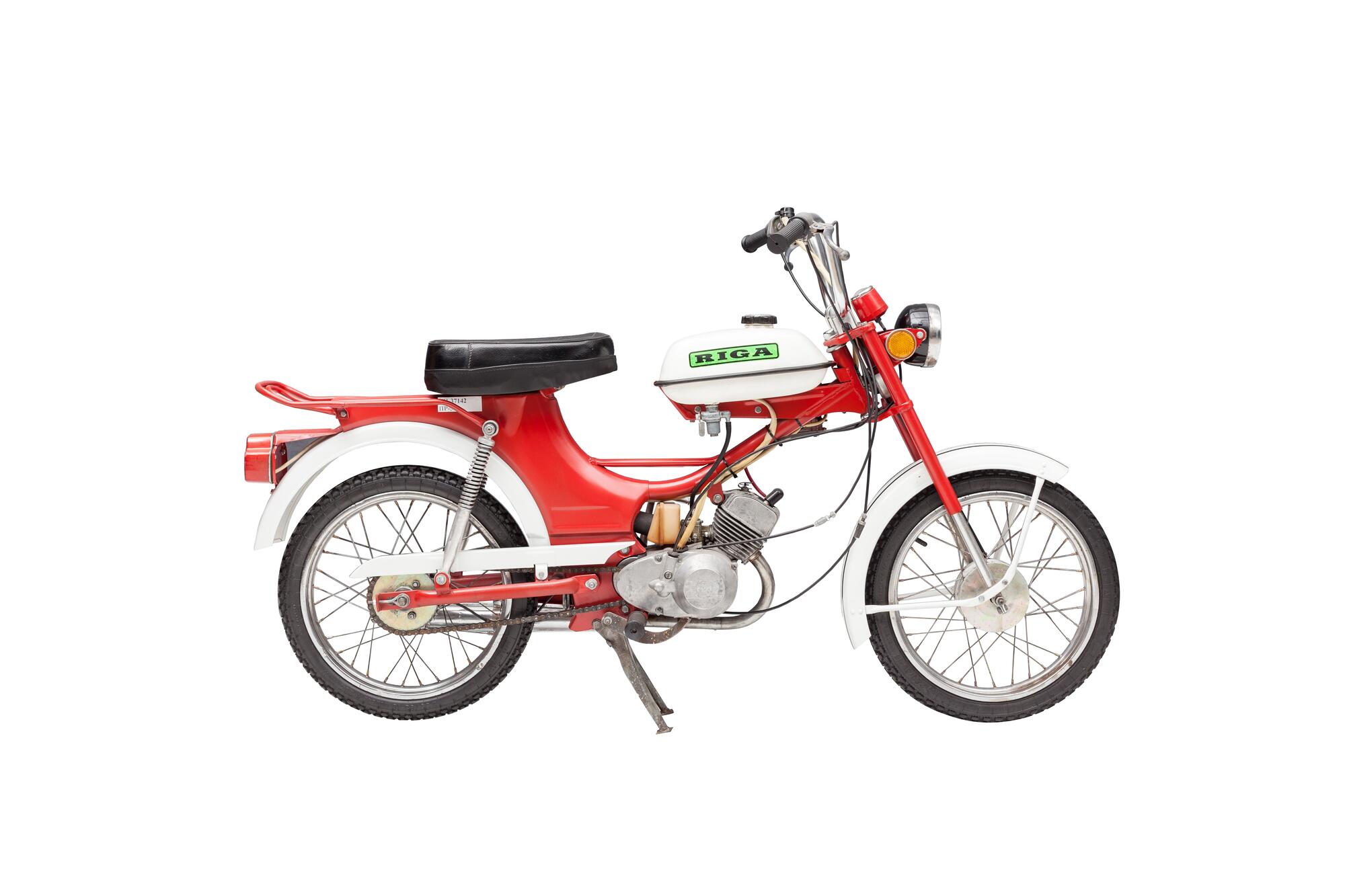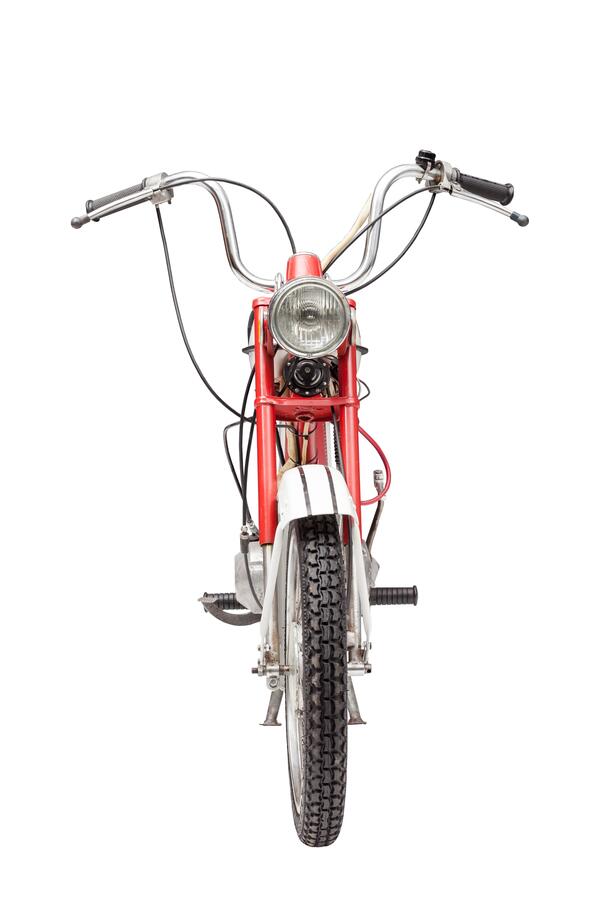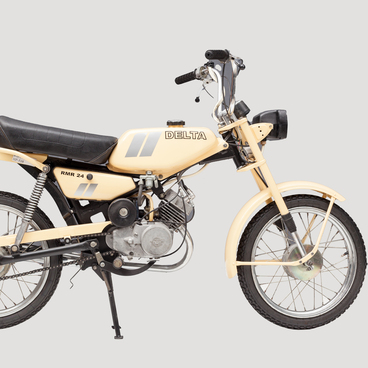In 1981, the new moped model Riga-22 replaced the Riga-16. Its description was published in the tenth issue of the “Za Rulyom” (Behind the Wheel) magazine the same year. The moped was similar to its predecessors but also had many new elements. For example, the designers moved the speedometer to the handlebar and made the headlight larger and flatter.
The new fuel tank and tail light gave the machine a more modern look. The designers of the Riga-22 created a series of two-tone paint schemes with six combinations, including white and blue, white and green, and white and red.
The main difference between the new Baltic moped and the earlier models was the new Sh-62 engine that replaced the Sh-58. These engines were supplied by the Bicycle and Motor Factory “Vairas” in Šiauliai, Lithuania (with its name translated from Lithuanian as “a steering wheel” or “a handlebar”).
The engine had the following technical specifications: one cylinder with a diameter of 38 mm, and a brake power of 49.8 cc. The manufacturers recommended using a fuel/oil mix of the А-72 or A-76 gasoline and oil in a 25 to 1 ratio. The engine had a capacity of at least 2.0 hp or 1.47 kW at 5200 rpm.
The moped was equipped with a K-60 carburetor and an A17B spark plug. The factory guaranteed a mileage of 15,000 km before requiring the first overhaul. The contactless ignition system not only allowed the rider to start the engine faster but also eliminated the need for regulating the contact point gaps and cleaning the contacts between repairs.
The stabilizer and commutator module, which was designed to be used in the ignition and lighting systems, was placed in the cut in the fuel tank where the designers also planned to move the ignition coil.
The new AC generator with an increased capacity of up to 45 W allowed the designers to install a louder horn and a tail lamp with a stop light. These features contributed to the motor vehicle’s safety and were complemented by retroreflectors on the headlight bracket. The maximum speed of the Riga-22 was limited to 40 km/h.
The new fuel tank and tail light gave the machine a more modern look. The designers of the Riga-22 created a series of two-tone paint schemes with six combinations, including white and blue, white and green, and white and red.
The main difference between the new Baltic moped and the earlier models was the new Sh-62 engine that replaced the Sh-58. These engines were supplied by the Bicycle and Motor Factory “Vairas” in Šiauliai, Lithuania (with its name translated from Lithuanian as “a steering wheel” or “a handlebar”).
The engine had the following technical specifications: one cylinder with a diameter of 38 mm, and a brake power of 49.8 cc. The manufacturers recommended using a fuel/oil mix of the А-72 or A-76 gasoline and oil in a 25 to 1 ratio. The engine had a capacity of at least 2.0 hp or 1.47 kW at 5200 rpm.
The moped was equipped with a K-60 carburetor and an A17B spark plug. The factory guaranteed a mileage of 15,000 km before requiring the first overhaul. The contactless ignition system not only allowed the rider to start the engine faster but also eliminated the need for regulating the contact point gaps and cleaning the contacts between repairs.
The stabilizer and commutator module, which was designed to be used in the ignition and lighting systems, was placed in the cut in the fuel tank where the designers also planned to move the ignition coil.
The new AC generator with an increased capacity of up to 45 W allowed the designers to install a louder horn and a tail lamp with a stop light. These features contributed to the motor vehicle’s safety and were complemented by retroreflectors on the headlight bracket. The maximum speed of the Riga-22 was limited to 40 km/h.




